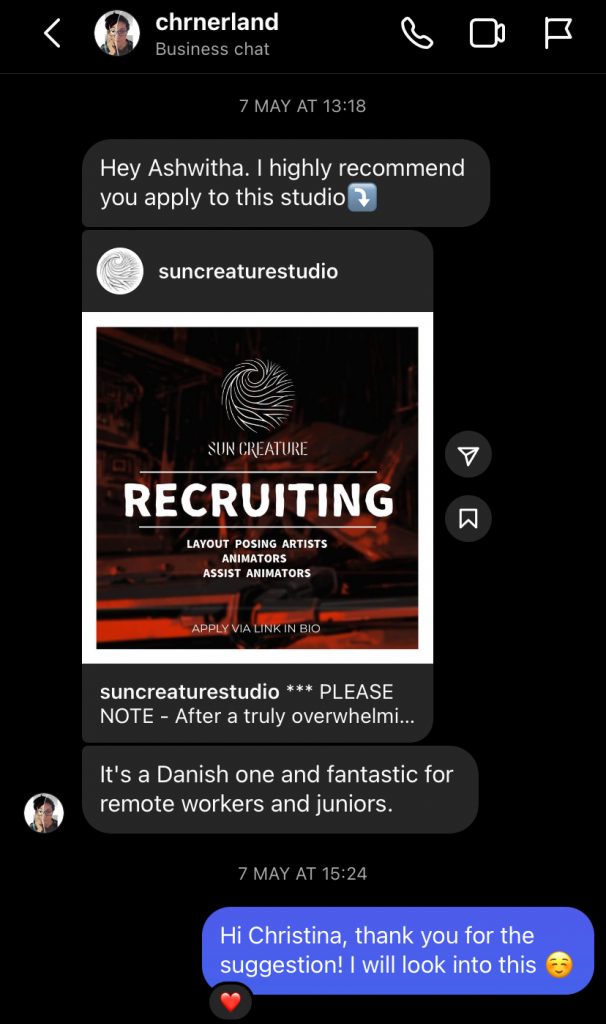Context
The time has now come to prepare for my exit from the learning bubble of safety at UAL, and the impending entry into the workforce. I’ve been slowly dipping my feet into searching for jobs, and the process has certainly been compelling, to say the least. The research phase has been eye-opening. I’ve been diving deep into studios I admire, from major commercial players like The Line and Golden Wolf, to creative powerhouses like Cartoon Saloon. Each has its own culture and pipeline, and I’m tailoring my applications accordingly.

While these studios aren’t always hiring, most have email contacts to which portfolios could be sent. I haven’t started cold emailing yet, but I will soon create a Google Sheet of these to keep track of my applications. Some studios clearly value technical innovation, while others prioritise storytelling and character acting. Understanding these nuances helps me position my skills and experience more effectively.
This has also required me to create multiple documents for each application, including personalised cover letters, resumes with relevant information to be shared alongside my site and showreel.
Resume
Creating my resume has been an interesting exercise in understanding different industry needs. My general resume highlights the various projects I’ve worked on, my educational history, and the software I am most proficient in. But I should also craft specialised versions: one emphasising my storyboarding background for studios that value that crossover skill, and another focusing on my collaborative project work for team-oriented environments. Projects like my LIAF sting ‘Heartwarmer’ would be a great example to highlight in the latter. Each version should tell the same story of my development as an animator, but with different emphases depending on the role.

Applications
I’m also casting a wide net between full-time positions and internships. While I’m eager to jump into a permanent role, I understand that internships at respected studios can provide invaluable industry experience and connections.


The application process itself requires patience and organisation. I’m tracking every submission, following up appropriately, and treating each application as seriously as the last. Rejection is part of the process, and it is particularly difficult when no replies are received, but such is life.
Networking has become surprisingly important. I’ve been attending virtual industry events (like Brighton International Animation Festival), connecting with alumni from my program, and engaging with filmmakers in person and online.

The animation community is surprisingly small and supportive, and I’ve found that genuine conversations about craft and industry trends often lead to valuable insights about opportunities that aren’t publicly advertised. Keeping in touch with Christina Nerland (who was a tutor in year one, but left UAL earlier this year) has been incredibly fruitful, as I have been able to receive some tips and nudges in the right direction. These opportunities I’ve applied to have yet to result in anything positive (sadly) but I am sure something will work out eventually.

Conclusion
As I prepare to graduate, I’m excited about the possibilities ahead. The skills I’ve developed go beyond just moving characters on screen – I’ve learned problem-solving, collaboration, and creative storytelling. Now it’s time to find the right studio where I can contribute to bringing characters to life and continue growing as an artist.
Leave a Reply